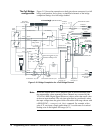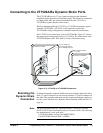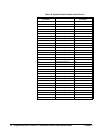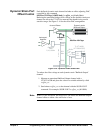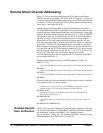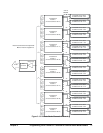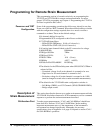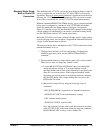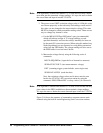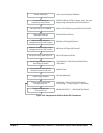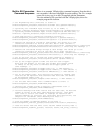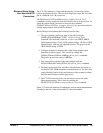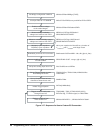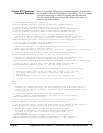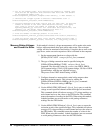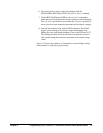
80 Programming the VT1422A & VT1529A/B for Remote Strain Measurement Chapter 3
Note If an algorithm is loaded while method "b" is used, the FIFO may contain
more than just the unstrained voltage readings. It is up to the user to obtain
the correct data and input it into the VT1422A.
3. The power-on and *RST excitation voltage value is 1.0E6; this value
was chosen purposely so that obviously bad readings would result if
this value was not changed to the true excitation voltage. This value
MUST be changed to obtain reasonable reading values. There are two
ways to change any channel’s value:
a. Use the MEAS:VOLTage:EXCitation? query (recommended)
which will take an average of 32 voltage readings on each
specified channel(s) and save the value(s) internally for later use
by the strain EU conversion process. When using this method, any
loaded algorithm(s) are not executed to avoid putting extraneous
values into the FIFO buffer. The voltage readings are also sent to
the FIFO buffer for review later if desire.
b. Measure the voltage directly using the following series of
commands:
ROUTe:SEQ:DEFine (input the list of channels to measure)
SENSe:FUNC:VOLT (sets measurement to voltage)
INIT (assuming trigger system defaults, starts single scan)
SENS:DATA:FIFO? (reads the data)
Next, the excitation voltage values read in above must be sent
back to the VT1422A’s EU conversion routine by using the
command: SENS:STRain:EXC <voltage value>,(@<channel>)
Note If an algorithm is loaded while method "b" is used, it will execute and may
place values in the FIFO in addition to the unstrained voltage readings.
It is up to the user to obtain the correct data and input it into the VT1422A.
Figure 3-16 shows the sequence of commands to measure remote strain
channels using the built-in strain Engineering Unit Conversion routines.



